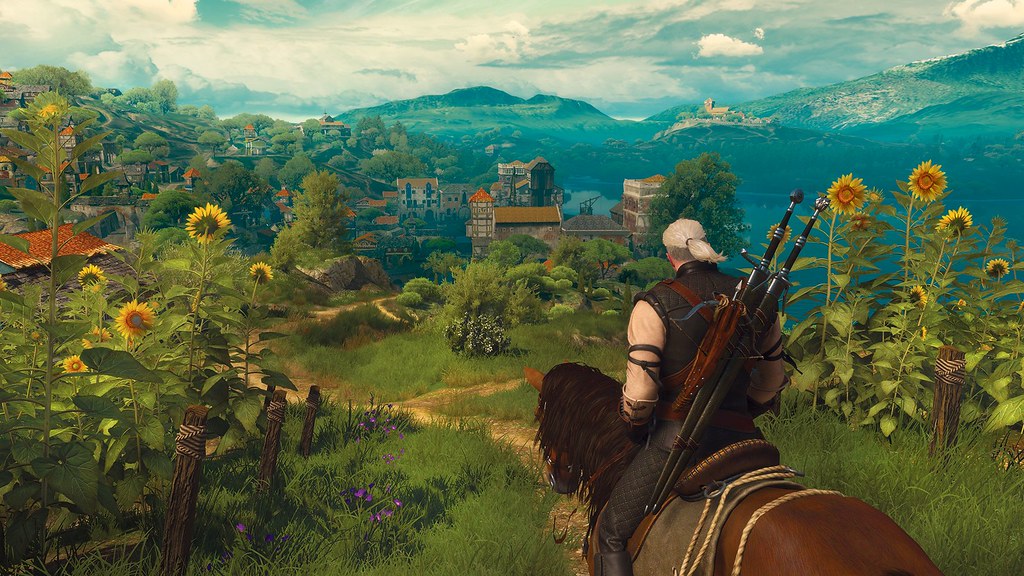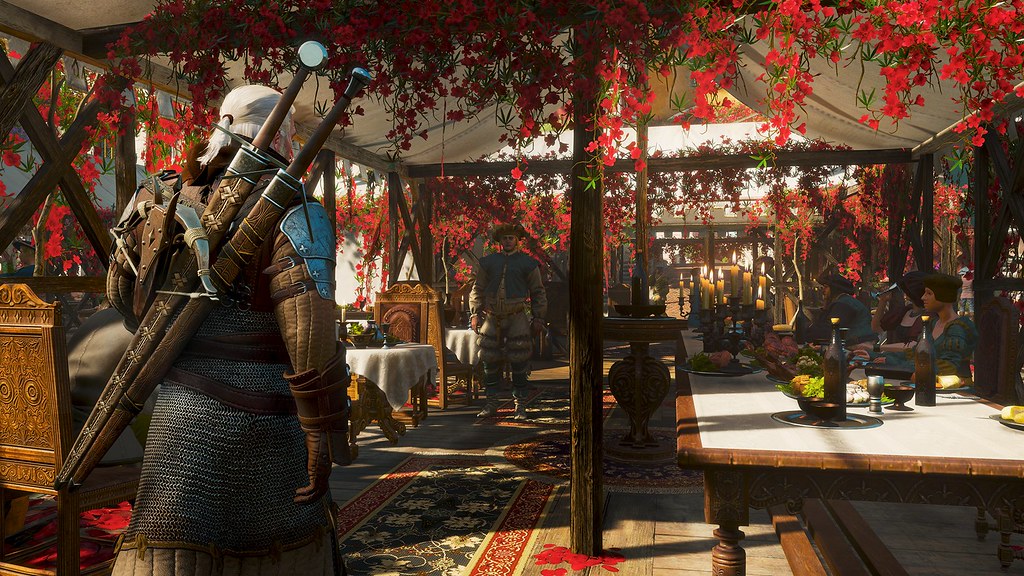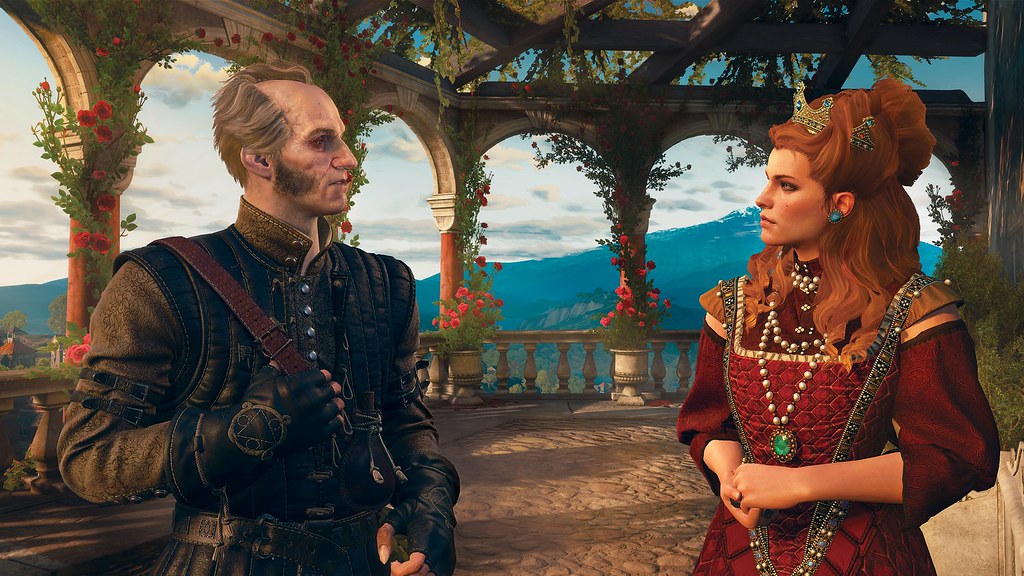
Hi, my name is Kacper Niepokólczycki and I’m an Environment Artist at CD Projekt Red. More than a year has passed, and we have been working very hard to bring you Blood and Wine, the final expansion to The Witcher 3: Wild Hunt. I’m really excited for this opportunity to talk more about creating it.
This expansion pack is an old-school add on with 20 hours of new adventures, where players will travel to the land of Toussaint. Witcher fans who are familiar with the books written by Andrzej Sapkowski have probably heard of this region and have waited for a long time to explore it.
We started with prototyping the whole hub — this was a difficult task, as Toussaint is different from anything we ever did in The Witcher 3: Wild Hunt. Sunny and beautiful, it’s almost a fantasy land straight out of a fairytale. Building something completely new gave us a lot of room for creativity, but at the same time it was challenging. The Slavic mythos lands we were all so accustomed to had to make room for something new — the mood and tone of southern Italy and France. We quickly fell in love with the architecture, colors, warm sun, and beautiful vistas filled with vineyards and wineries.
The most important part of this new realm is the city of Beauclair, the capital of Toussaint, and the palace where the local duchess resides. We had several main focuses when creating these places, and one of the biggest ones was providing players with breathtaking sightseeing opportunities. At the same time, Beauclair had to be different than another epic place in the game: Novigrad.
We made that happen, among other things, by adding a lot of verticality to exploration. Beauclair has many levels and really distinct districts. It has its own landmarks and — much like a real-life city — it’s own unique feel that helps immerse players in the world of the game. The city itself is a landmark as well. Since it’s placed on an elevated patch of land, you can see it from afar and it can help you navigate the land of Toussaint without the use of any map.
When the concept of the city was done, we started to work on the terrain around it. We plotted routes leading in and out of the city, placed roads and connected these roads to the myriad of points of Interest the expansion offers. With every iteration, we ended up with more and more content. Concept artists were a huge part of the process providing us us with conceptual art of locations, both small and big, we later used to saturate the realm with really mysterious and dangerous spots Geralt could visit.
Of course having concept art does not mean all of the design work is finished — on the contrary. In many cases concept art looks gorgeous on paper, but will not work gameplay-wise. This is where 3D Environment Artists come in. Our job is making the location look great and, at the same time, make it play even better. After all, we are not making a film, but crafting a great gameplay experience.
Eventually, we started to create more locations outside the city. One of the key things here is always remembering to account for the distance between different locations. This is important to constantly keep players engaged. Just like in Wild Hunt, there are many points of interest to uncover when you explore Toussaint.
This is just a very short summary of how we approach the creation of the open world environment you’ll find in The Witcher 3: Wild Hunt and Blood and Wine. It’s an extremely fun and satisfying process, but also very challenging. Personally, I’m sure you’ll like Blood and Wine for it’s new look. It was a super fun experience for us to create it, and I hope you’ll have even more fun experiencing it as a gamer.
See you in Toussaint!















Comments are closed.
24 Comments
Loading More Comments